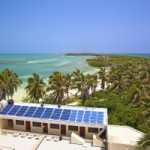The Latin America and the Caribbean region has huge energy resource potential but energy poverty is also high. Is enough being done to narrow the gap? What are the challenges?

The 40–50 million makes up 10% of the population and three-quarters of them are in rural areas. In Africa 60% of the population does not have proper access to energy, while in Asia it is 25% and in OECD countries the figure is less than 1% of the population who do not have access.
So Latin America is somewhere in between. I am not trying to downplay the problem. Energy access is very important for the wellbeing of the population as it facilitates access to basic services such as education, health and communication. Therefore governments and international organisations in the region have been seeking to increase energy coverage. However, the marginal cost of providing energy increases with the level of coverage, and in general the users in remote areas find it more difficult to pay for energy services.
Governments have responded by implementing rural electrification programmes with a high subsidy component. For users in more remote areas, governments have favoured the use of off-grid technologies.
With regards to the environment, how can the region better prepare its production systems and infrastructure to adapt to the enormous impact of climate change?
Indeed, climatic variability and extreme events have been severely affecting the Latin America region over recent years. We have had intense Venezuelan rainfall, flooding in the Argentinean Pampas, Amazon drought, hail storms in Bolivia and in the greater Buenos Aires area, the unprecedented Hurricane Catarina in the South Atlantic, and a new record hurricane season in the Caribbean basin every other year.
Climate change threatens to undermine the region’s long-term efforts to develop sustainably, while the most vulnerable members of society will be affected the most. The Inter-American Development Bank has estimated that the cost of adaptation lies somewhere between US$40 and 170 billion dollars between now and 2030.
Many sectors require sensible spending on adaptation, including water and sanitation, health, agriculture and forestry, energy, transportation, and integrated urban development.
Some options to increase the capacity to adapt to climate change include the reduction of ecosystem degradation in Latin America through the improvement and reinforcement of policy, planning and management.
Regional integration and interconnection is a big issue. How can the region’s players work together on this?

However, regional energy integration is not an easy task. Besides the logistics of it, there is always the problem of politics: Bolivia selling its gas indirectly to Chile through Argentina is an example. Because of diplomatic and trade conflicts countries in the region have been always playing with the trade-offs of energy autonomy and energy integration.
There have been many energy integration projects but none of them have been successful so far in South America. In gas there was the ambitious ‘energy ring’ project, which involves bringing Peruvian gas to five countries. Another recent project, the Southern Gas Pipeline, is even more ambitious. Promoted by Venezuela, its other partners include Bolivia and the countries of Mercosur: Argentina, Brazil, Paraguay and Uruguay.
There has been some progress in terms of energy integration but these are all in hydro where there are several bi-national hydro power projects in Mercosur.
Central America also provides a good example of energy integration with the Central American Electrical Interconnection System (SIEPAC). The SIEPAC consists of a 1800 km power transmission line with a capacity of 300 MW, sufficient to enable the creation of a regional electricity market.
Latin America is becoming an increasingly important supplier of raw materials to the rest of world. How do you think countries can work together to sustainably develop the region’s energy resource?
Yes, Latin America is increasingly a supplier of some raw materials to developed and emerging markets; however, it is important to note that some Latin American countries, in particular the largest ones, have industrial aspirations so governments are looking to process more domestically.
The increase in industrialisation has also come with a significant increase in energy demand. Some countries which had been net energy suppliers now find the need to import. At the same time there have been new discoveries of oil and gas and new hydropower projects have been finalised.
This is amongst the issues we will be discussing at our upcoming World Energy Congress.
You have a lot of experience in sustainable development. How do you envision you will help support our member committees and our LAC Vice-Chair to strengthen the WEC’s impact in the LAC region?
I think that the key to strengthen the role of WEC in the LAC region is through empowering the national member committees to participate in the creation of the knowledge that is later shared in the network. In the past, developing countries were consumers of knowledge produced in the global north, even when some of that knowledge did not apply well to the realities of the typical developing country. I think most member committees in the region have the human capital to contribute to the discussion and push forward in the agenda the relevant issues.
My task would be to increase the visibility of the national committees with other committees in the network, with the press, and with our global partners. I would also be the liaison between the national member committees and the different WEC technical working groups.
Currently we have eight WEC member countries in the region and of course I will also be looking to increase this number. ■
■ “Latin America and the Caribbean: Blessed with resources, overwhelmed by choice?”, will be one of the Regional Crossroads discussions at the World Energy Congress in South Korea during 13–17 October.





_-80_result_688_387_s_c1_c_c.jpg)


